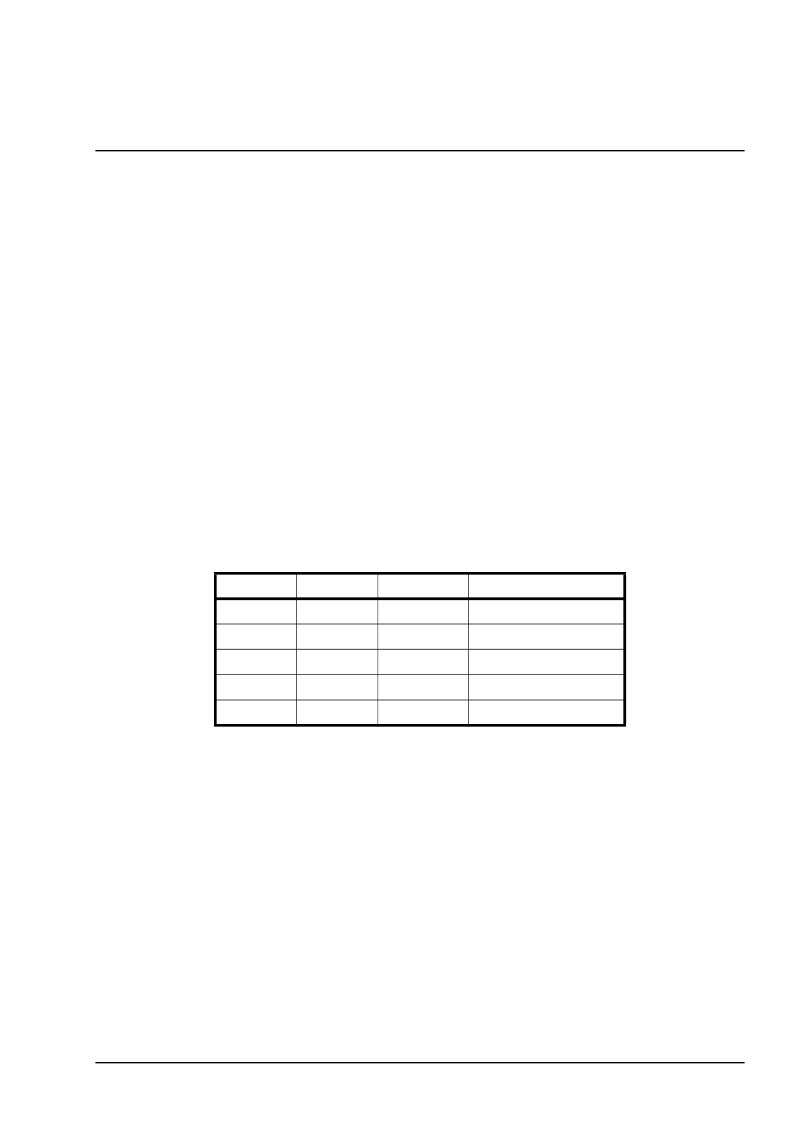- 您現(xiàn)在的位置:買賣IC網(wǎng) > PDF目錄376460 > XRT16C854 (Exar Corporation) 2.97V TO 5.5V QUAD UART WITH 128-BYTE FIFO PDF資料下載
參數(shù)資料
| 型號: | XRT16C854 |
| 廠商: | Exar Corporation |
| 英文描述: | 2.97V TO 5.5V QUAD UART WITH 128-BYTE FIFO |
| 中文描述: | 2.97V至5.5V四路UART的128字節(jié)FIFO |
| 文件頁數(shù): | 31/54頁 |
| 文件大小: | 485K |
| 代理商: | XRT16C854 |
第1頁第2頁第3頁第4頁第5頁第6頁第7頁第8頁第9頁第10頁第11頁第12頁第13頁第14頁第15頁第16頁第17頁第18頁第19頁第20頁第21頁第22頁第23頁第24頁第25頁第26頁第27頁第28頁第29頁第30頁當(dāng)前第31頁第32頁第33頁第34頁第35頁第36頁第37頁第38頁第39頁第40頁第41頁第42頁第43頁第44頁第45頁第46頁第47頁第48頁第49頁第50頁第51頁第52頁第53頁第54頁

xr
REV. 3.0.1
XR16C854/854D
2.97V TO 5.5V QUAD UART WITH 128-BYTE FIFO
31
LCR[3]: TX and RX Parity Select
Parity or no parity can be selected via this bit. The parity bit is a simple way used in communications for data
integrity check. See
Table 12
for parity selection summary below.
Logic 0 = No parity.
Logic 1 = A parity bit is generated during the transmission while the receiver checks for parity error of the
data character received.
LCR[4]: TX and RX Parity Select
If the parity bit is enabled with LCR bit-3 set to a logic 1, LCR BIT-4 selects the even or odd parity format.
Logic 0 = ODD Parity is generated by forcing an odd number of logic 1’s in the transmitted character. The
receiver must be programmed to check the same format (default).
Logic 1 = EVEN Parity is generated by forcing an even number of logic 1’s in the transmitted character. The
receiver must be programmed to check the same format.
LCR[5]: TX and RX Parity Select
If the parity bit is enabled, LCR BIT-5 selects the forced parity format.
LCR BIT-5 = logic 0, parity is not forced (default).
LCR BIT-5 = logic 1 and LCR BIT-4 = logic 0, parity bit is forced to a logical 1 for the transmit and receive
data.
LCR BIT-5 = logic 1 and LCR BIT-4 = logic 1, parity bit is forced to a logical 0 for the transmit and receive
data.
LCR[6]: Transmit Break Enable
When enabled, the Break control bit causes a break condition to be transmitted (the TX output is forced to a
“space’, logic 0, state). This condition remains, until disabled by setting LCR bit-6 to a logic 0.
Logic 0 = No TX break condition (default).
Logic 1 = Forces the transmitter output (TX) to a “space”, logic 0, for alerting the remote receiver of a line
break condition.
LCR[7]: Baud Rate Divisors Enable
Logic 0 = Data registers are selected (default).
Logic 1 = Divisor latch registers are selected.
T
ABLE
12: P
ARITY
SELECTION
LCR B
IT
-5
LCR B
IT
-4
LCR B
IT
-3
P
ARITY
SELECTION
X
X
0
No parity
0
0
1
Odd parity
0
1
1
Even parity
1
0
1
Force parity to mark, “1”
1
1
1
Forced parity to space, “0”
相關(guān)PDF資料 |
PDF描述 |
|---|---|
| XRT16L2552 | 2.25V TO 5.5V DUART WITH 16-BYTE FIFO |
| XRT3591 | SINGLECHIP V. 35 TRANSCEIVER |
| XRT3591B | SINGLECHIP V. 35 TRANSCEIVER |
| XRT3591BID | SINGLECHIP V. 35 TRANSCEIVER |
| XRT3591BIP | SINGLECHIP V. 35 TRANSCEIVER |
相關(guān)代理商/技術(shù)參數(shù) |
參數(shù)描述 |
|---|---|
| XRT16L2552 | 制造商:EXAR 制造商全稱:EXAR 功能描述:2.25V TO 5.5V DUART WITH 16-BYTE FIFO |
| XRT2588CN | 制造商:Exar Corporation 功能描述: |
| XR-T2713CP | 制造商:未知廠家 制造商全稱:未知廠家 功能描述:Subscriber Line Metering/Monitoring Circuit |
| XR-T3588 | 制造商:EXAR 制造商全稱:EXAR 功能描述:V.35 Interface Receiver/Transmitter |
| XR-T3588-89ES | 制造商:EXAR 制造商全稱:EXAR 功能描述:XR-T3588/89 Evaluation System |
發(fā)布緊急采購,3分鐘左右您將得到回復(fù)。